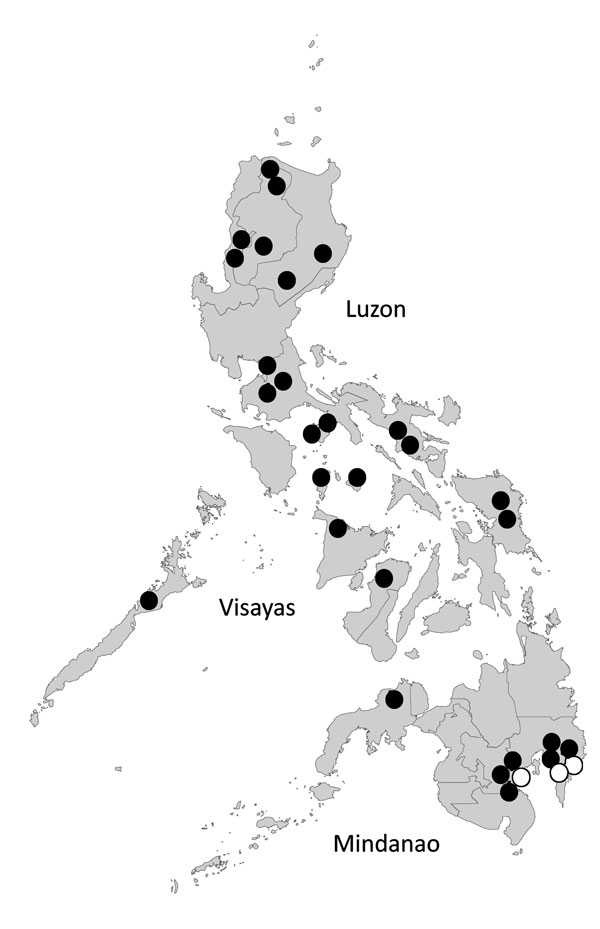Volume 22, Number 5—May 2016
Dispatch
Molecular Characterization of Chikungunya Virus, Philippines, 2011–2013
Figure 2

Figure 2. Geographic distribution of CHIKV genotypes in the Philippines. The location of samples collected in this study are indicated by circles; 1 circle represents 1 sample. Black circles indicate Asian genotype; white (open) circles indicate East/Central/South African genotype. CHIKV, chikungunya virus.
1These authors contributed equally to this article.
Page created: April 13, 2016
Page updated: April 13, 2016
Page reviewed: April 13, 2016
The conclusions, findings, and opinions expressed by authors contributing to this journal do not necessarily reflect the official position of the U.S. Department of Health and Human Services, the Public Health Service, the Centers for Disease Control and Prevention, or the authors' affiliated institutions. Use of trade names is for identification only and does not imply endorsement by any of the groups named above.